Dodecyl Methacrylate
Synonym(s):Dodecyl methacrylate
- CAS NO.:142-90-5
- Empirical Formula: C16H30O2
- Molecular Weight: 254.41
- MDL number: MFCD00008972
- EINECS: 205-570-6
- SAFETY DATA SHEET (SDS)
- Update Date: 2025-12-17 09:50:03

What is Dodecyl Methacrylate?
Chemical properties
clear colorless to yellowish liquid
The Uses of Dodecyl Methacrylate
Miniemulsion polymerization of laurel methacrylate has been reported. Atom transfer radical polymerization and consecutive block copolymerization with methyl methacrylate has been investigated. Preparation of LMA based monolithic columns for CEC has been reported. LMA is used as a co-stabilizer to retard Ostwald ripening effect.
What are the applications of Application
Dodecyl methacrylate (Dodecyl 2-methylacrylate; Lauryl methacrylate) could be a crosslinker in preparing tough polyacrylamide hydrogels. It can also be used in the following industries: In the adhesive industry, it is used for Synthetic sealants, adhesive glue agents; In the coatings industry, it is used for renewing resin/coating, coating material at low temperatures for cars; In the oil industry, it is used as a synthetic oil-soluble drag-reduction agent; In the rubber industry, it is used as a composite stabilizer; In the oil lubricant industry, it can be used as lubricating oil; In the papermaking industry, it is used as a composite stabilizer; In fiber processing industries, it is used for composite spinning oil, synthetic high waterproof, and oil-proof fabric finishing agents; In the plastic industry, it is used for the synthesis of monomers.
General Description
Liquid. Floats on water.
Reactivity Profile
Dodecyl 2-methylacrylate is an ester. Esters react with acids to liberate heat along with alcohols and acids. Strong oxidizing acids may cause a vigorous reaction that is sufficiently exothermic to ignite the reaction products. Heat is also generated by the interaction of esters with caustic solutions. Flammable hydrogen is generated by mixing esters with alkali metals and hydrides. Tends to polymerize. Oxidizing and reducing agents may initiate polymerization. Reaction may also occur when heated [USCG, 1999].
Health Hazard
Inhalation temporarily reduces blood pressure from 5 to 25%, increases respiratory rate, decreases heart rate, and causes some EKG changes. Liquid may cause irritation of eyes and skin. May be harmful if swallowed.
Fire Hazard
Behavior in Fire: Heat can induce polymerization with rapid release of energy. Sealed containers may rupture explosively.
Flammability and Explosibility
Non flammable
Purification Methods
Purify the ester by fractional distillation in a high vacuum. Add 0.05% of hydroquinone monomethyl ether as stabilizer. [Rehberg & Fischer Ind Eng Chem 40 1430 1948, Beilstein 2 III 1290, 2 IV 1528.]
Properties of Dodecyl Methacrylate
| Melting point: | -7 °C (lit.) |
| Boiling point: | 142 °C/4 mmHg (lit.) |
| Density | 0.868 g/mL at 25 °C (lit.) |
| vapor pressure | 0.06Pa at 20℃ |
| refractive index | n |
| Flash point: | >230 °F |
| storage temp. | Inert atmosphere,2-8°C |
| solubility | Chloroform (Slightly), Methanol (Slightly) |
| form | Liquid |
| color | Clear light yellow |
| Water Solubility | insoluble |
| BRN | 1708160 |
| CAS DataBase Reference | 142-90-5(CAS DataBase Reference) |
| NIST Chemistry Reference | 2-Propenoic acid, 2-methyl-, dodecyl ester(142-90-5) |
| EPA Substance Registry System | Lauryl methacrylate (142-90-5) |
Safety information for Dodecyl Methacrylate
| Signal word | Warning |
| Pictogram(s) |
 Exclamation Mark Irritant GHS07  Environment GHS09 |
| GHS Hazard Statements |
H315:Skin corrosion/irritation H319:Serious eye damage/eye irritation H335:Specific target organ toxicity, single exposure;Respiratory tract irritation H410:Hazardous to the aquatic environment, long-term hazard |
| Precautionary Statement Codes |
P261:Avoid breathing dust/fume/gas/mist/vapours/spray. P264:Wash hands thoroughly after handling. P264:Wash skin thouroughly after handling. P271:Use only outdoors or in a well-ventilated area. P273:Avoid release to the environment. P302+P352:IF ON SKIN: wash with plenty of soap and water. P305+P351+P338:IF IN EYES: Rinse cautiously with water for several minutes. Remove contact lenses, if present and easy to do. Continuerinsing. |
Computed Descriptors for Dodecyl Methacrylate
Dodecyl Methacrylate manufacturer
Kavya Pharma
New Products
Indole Methyl Resin tert-butyl 9-methoxy-3-azaspiro[5.5]undecane-3-carboxylate Boc-His(Boc)-OH 2-CTC Resin 4-Chloro-7-tosy1-7Hpyrrolo[2,3-d]pyrimidine 5,7-Dibromo-1H-indole 2,5-dichloro-N-hydroxy-4,6-dimethylpyridine-3-carboximidamide 2,2-Dimethoxy-7-azaspiro[3.5]nonane hydrochloride 4-chloromethyl-5-methyl-1,3-dioxol-2-one (DMDO-Cl) R-2-BENZYLOXY PROPIONIC ACID 1,1’-CARBONYLDIIMIDAZOLE 1,1’-CARBONYLDI (1,2-4 TRIAZOLE) N-METHYL INDAZOLE-3-CARBOXYLIC ACID 4-((2-hydroxyethyl)thio)benzoic acid 1-(TERT-BUTOXYCARBONYL)-2-PYRROLIDINONE Methyl 6-methylnicotinate 3-Pyridineacrylic acid tert-Butyl carbazate TETRAHYDRO-2H-PYRAN-3-OL 2-((4-morpholinophenylamino) (methylthio) methylene) malononitrile 3-(4-morpholinophenylamino)-5-amino-1H-pyrazole-4-carbonitrile 2,4-dihydroxybenzaldehyde 1,3-Diethyl-1,3-Diphenylurea Methyl 2-methylquinoline-6-carboxylateRelated products of tetrahydrofuran

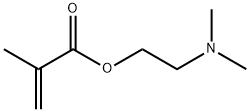
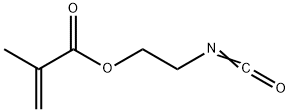
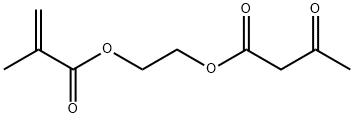

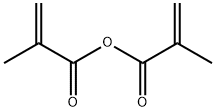

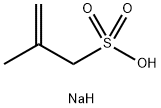
You may like
-
 Lauryl methacrylate contains 500 ppm MEHQ as inhibitor CAS 142-90-5View Details
Lauryl methacrylate contains 500 ppm MEHQ as inhibitor CAS 142-90-5View Details
142-90-5 -
 Dodecyl Methacrylate (stabilized with MEHQ) CAS 142-90-5View Details
Dodecyl Methacrylate (stabilized with MEHQ) CAS 142-90-5View Details
142-90-5 -
 Lauryl methacrylate, 96% CAS 142-90-5View Details
Lauryl methacrylate, 96% CAS 142-90-5View Details
142-90-5 -
 Lauryl methacrylate CAS 142-90-5View Details
Lauryl methacrylate CAS 142-90-5View Details
142-90-5 -
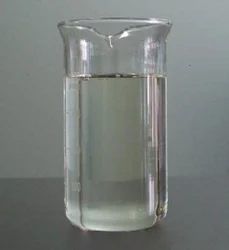 Lauryl Methacrylate liquid, Grade: IndustriesView Details
Lauryl Methacrylate liquid, Grade: IndustriesView Details
142-90-5 -
 Pyridine 99.5% HPLC /UV SpectroscopyView Details
Pyridine 99.5% HPLC /UV SpectroscopyView Details
110-86-1 -
 Dibutyl PhthalateView Details
Dibutyl PhthalateView Details
84-74-2 -
 Thiourea 99% ARView Details
Thiourea 99% ARView Details
62-56-6
